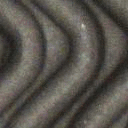Texture Database
Drexel Vision Group

About the Database
The Drexel Texture Database contains 20 different textures, each of which is imaged approximately 2,000 times under different (known) illumination directions, at multiple distances, and with different in-plane and out-of-plane rotations.
This database was originally released in conjunction with the following paper. Please cite this work when using our database:

"The Scale of Geometric Texture,"
in Proc. of Twelfth European Conference on Computer Vision ECCV'12,
Part I, pp58-71, Oct., 2012 [PDF]
Note that this database is provided for your benefit without warranty or guarantees of any sort. If you note any problem with the database, please email us, but please note that we may not have the resources to deal with all issues.


